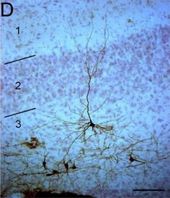
© NASA/JPL-Caltech/UCLAThe red dot at the center of this image is the first near-Earth asteroid discovered by NASA's Wide-Field Infrared Survey Explorer, or WISE
NASA's Wide-field Infrared Survey Explorer, or WISE, has spotted its first never-before-seen near-Earth asteroid, the first of hundreds it is expected to find during its mission to map the whole sky in infrared light.
The near-Earth object, designated 2010 AB78, was discovered by WISE Jan. 12. After the mission's sophisticated software picked out the moving object against a background of stationary stars, researchers followed up and confirmed the discovery with the University of Hawaii's 2.2-meter (88-inch) visible-light telescope near the summit of Mauna Kea.
The asteroid is currently about 158 million kilometers (98 million miles) from Earth. It is estimated to be roughly 1 kilometer (0.6 miles) in diameter and circles the sun in an elliptical orbit tilted to the plane of our solar system. The object comes as close to the sun as Earth, but because of its tilted orbit, it is not thought to pass near our planet. This asteroid does not pose any foreseeable impact threat to Earth, but scientists will continue to monitor it.

